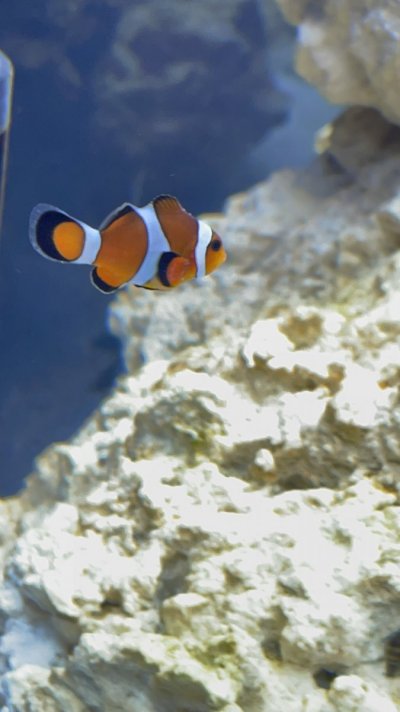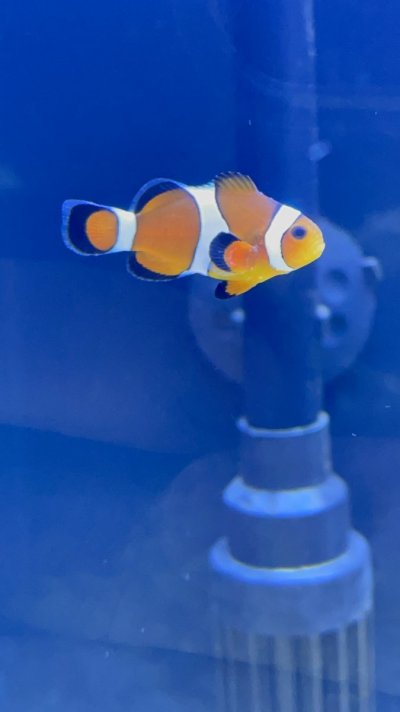Navigation
Install the app
How to install the app on iOS
Follow along with the video below to see how to install our site as a web app on your home screen.
Note: This feature may not be available in some browsers.
More options
You are using an out of date browser. It may not display this or other websites correctly.
You should upgrade or use an alternative browser.
You should upgrade or use an alternative browser.
Welcome to Reef2Reef!
The spots look a bit too diffuse to be ich. It could be the start of Brooklynella or even flukes. Trouble is, those choices each have a different treatment.
How long have you had the fish? What other fish are in with it? Did it go through any quarantine?
Jay
The spots look a bit too diffuse to be ich. It could be the start of Brooklynella or even flukes. Trouble is, those choices each have a different treatment.
How long have you had the fish? What other fish are in with it? Did it go through any quarantine?
Jay
Upvote
0
vetteguy53081
Well known Member and monster tank lover
View Badges
Partner Member 2024
Excellence Award
Reef Tank 365
RGB
Article Contributor
Tampa Bay Reef Keepers
West Palm Beach Reefer
Hospitality Award
Ocala Reef Club Member
305 Reef Club
Wisco Reefers
Midwest Reefer
Fish Medic
MAC of SW Florida
Rock Pool Reef Keepers
R2R Secret Santa 2023
My Tank Thread
My Aquarium Showcase
Agreeing with Jay, I too see the start of brooklynella especially with the white mucus film.
The most noticeable sign of Brooklynella is the heavy amount of slime that is produced by a fish that has contracted this parasite. As the disease progresses, a thick whitish mucus covers the body. This will usually start at the head and spread outward across the entire body. Skin lesions appear and it is not uncommon for signs of secondary bacterial infections to arise.
There are varying suggestions on how to treat an aquarium that has been infested with Brooklynella. The consensus is that the best and most effective treatment for Brooklynella is a formaldehyde solution in better terms - Formalin. Typically a standard formalin solution is mixed with either fresh or saltwater in a separate treatment container. Initially, all infected fish are given a quick dip in the formalin at a higher concentration, followed by continued treatment in a prolonged bath of formalin at a lower concentration in a quarantine tank (QT). Of course, the longer the fish are exposed to the formalin treatment, the more effective it will be at eliminating this disease.
If a formalin solution is not available for immediate use, temporary relief may be provided by giving fish a FW dip or bath. Even though this treatment will not cure the disease, it can help to remove some of the parasites, as well as reduce the amount of mucus in the gills to assist with respiration problems.
The most noticeable sign of Brooklynella is the heavy amount of slime that is produced by a fish that has contracted this parasite. As the disease progresses, a thick whitish mucus covers the body. This will usually start at the head and spread outward across the entire body. Skin lesions appear and it is not uncommon for signs of secondary bacterial infections to arise.
There are varying suggestions on how to treat an aquarium that has been infested with Brooklynella. The consensus is that the best and most effective treatment for Brooklynella is a formaldehyde solution in better terms - Formalin. Typically a standard formalin solution is mixed with either fresh or saltwater in a separate treatment container. Initially, all infected fish are given a quick dip in the formalin at a higher concentration, followed by continued treatment in a prolonged bath of formalin at a lower concentration in a quarantine tank (QT). Of course, the longer the fish are exposed to the formalin treatment, the more effective it will be at eliminating this disease.
If a formalin solution is not available for immediate use, temporary relief may be provided by giving fish a FW dip or bath. Even though this treatment will not cure the disease, it can help to remove some of the parasites, as well as reduce the amount of mucus in the gills to assist with respiration problems.
Upvote
0
Thanks for the advice! I got the pair of clowns as soon as my cycle finished a little over two months ago, the other clown looks healthy. Since then I have added an orchid dottyback, yellow watchmen goby, and a cleaner shrimp. Plus a clean up crew about a week ago when I started to notice algae. This is my first tank and I havent done any quarantine procedures with the fish so far, I think I learned my lesson on that.Welcome to Reef2Reef!
The spots look a bit too diffuse to be ich. It could be the start of Brooklynella or even flukes. Trouble is, those choices each have a different treatment.
How long have you had the fish? What other fish are in with it? Did it go through any quarantine?
Jay
Upvote
0
Thank you for your advice.Agreeing with Jay, I too see the start of brooklynella especially with the white mucus film.
The most noticeable sign of Brooklynella is the heavy amount of slime that is produced by a fish that has contracted this parasite. As the disease progresses, a thick whitish mucus covers the body. This will usually start at the head and spread outward across the entire body. Skin lesions appear and it is not uncommon for signs of secondary bacterial infections to arise.
There are varying suggestions on how to treat an aquarium that has been infested with Brooklynella. The consensus is that the best and most effective treatment for Brooklynella is a formaldehyde solution in better terms - Formalin. Typically a standard formalin solution is mixed with either fresh or saltwater in a separate treatment container. Initially, all infected fish are given a quick dip in the formalin at a higher concentration, followed by continued treatment in a prolonged bath of formalin at a lower concentration in a quarantine tank (QT). Of course, the longer the fish are exposed to the formalin treatment, the more effective it will be at eliminating this disease.
If a formalin solution is not available for immediate use, temporary relief may be provided by giving fish a FW dip or bath. Even though this treatment will not cure the disease, it can help to remove some of the parasites, as well as reduce the amount of mucus in the gills to assist with respiration problems.
Upvote
0
Similar threads
- Replies
- 18
- Views
- 196
- Replies
- 7
- Views
- 149
- Replies
- 13
- Views
- 271
- Replies
- 14
- Views
- 312















